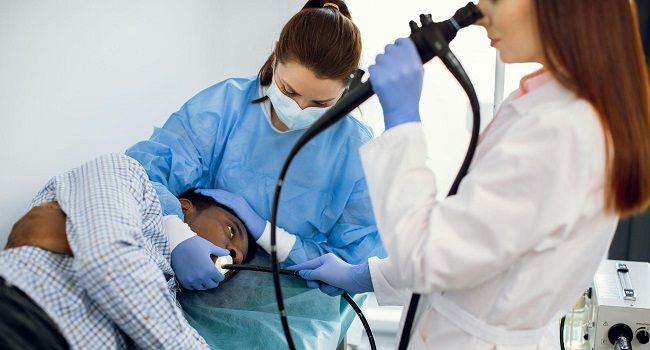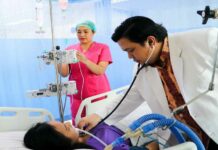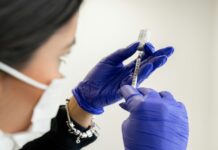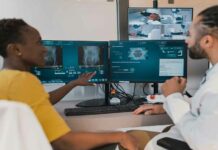One of the marvels of modern medicine is the fact that we are able to peer inside the human body without invasive surgery has revolutionised diagnosis and treatment. Enter endoscopy, a minimally invasive procedure that serves as a reminder of medical innovation in this regard. Offering a window into the inner workings of organs and tissues, endoscopy has become an indispensable tool for physicians across various medical specialties. From diagnosing gastrointestinal disorders to aiding in complex surgical procedures, the applications of endoscopy are vast and continually expanding, enhancing patient care and outcomes.
What is Endoscopy?
Endoscopy is a medical procedure that involves the use of an endoscope, a flexible tube with a camera and light attached to it. This slender instrument is inserted into the body through a natural opening or a small incision. As it navigates through the body’s internal pathways, the camera transmits real-time images to a monitor, allowing healthcare providers to visualise and assess the structures being examined.
The Versatility of Endoscopic Techniques
One of the key strengths of endoscopy lies in its versatility. It can be used to explore a wide range of anatomical sites, including the gastrointestinal (GI) tract, respiratory system, urinary tract, reproductive organs, and even joints. Each specialised variant of endoscopy is tailored to meet the unique diagnostic and therapeutic needs of different medical specialties.
Gastrointestinal Endoscopy
Among the various applications of endoscopy, gastrointestinal endoscopy holds particular significance. It enables gastroenterologists to evaluate the oesophagus, stomach, small intestine, and colon with remarkable precision. Common procedures in this domain include:
1. Esophagogastroduodenoscopy (EGD): This procedure involves the examination of the oesophagus, stomach, and the beginning of the small intestine (duodenum). It is often used to investigate symptoms such as difficulty swallowing, abdominal pain, or gastrointestinal bleeding.
2. Colonoscopy: By inserting a colonoscope into the rectum and advancing it through the colon, physicians can detect abnormalities such as polyps, inflammation, or cancerous growths. Colonoscopy and endoscopy play a crucial role in colorectal cancer screening and surveillance.
3. Endoscopic Retrograde Cholangiopancreatography (ERCP): ERCP combines endoscopy with X-ray imaging to diagnose and treat conditions affecting the bile ducts and pancreatic ducts. It is frequently employed in the management of bile duct stones, strictures, and pancreaticobiliary cancers.
Respiratory Endoscopy
Endoscopy also offers valuable insights into the lungs and airways. Procedures such as bronchoscopy allow pulmonologists to visualise the trachea and bronchial tree, aiding in the diagnosis of conditions like lung cancer, pneumonia, or chronic obstructive pulmonary disease (COPD). Additionally, advanced techniques such as endobronchial ultrasound (EBUS) enable the sampling of lung nodules and lymph nodes for accurate staging of lung cancer.
Urologic and Gynecologic Endoscopy
Endoscopic techniques have also revolutionised the fields of urology and gynaecology. Urologists utilise cystoscopy to examine the bladder and urethra, diagnosing conditions such as urinary tract infections, bladder cancer, or urinary incontinence. In gynaecology, hysteroscopy allows visualisation of the uterus and fallopian tubes, facilitating the diagnosis and treatment of conditions like fibroids, polyps, or infertility.
Advancements Driving Progress
The field of endoscopy continues to evolve rapidly, driven by technological advancements and innovative techniques. Miniaturisation of instruments, high-definition imaging, and the incorporation of artificial intelligence have enhanced the accuracy and efficacy of endoscopic procedures. Additionally, the development of therapeutic endoscopy has expanded the scope of interventions possible through minimally invasive means, including endoscopic resections, stent placements, and ablation therapies.

Challenges and Future Directions
While endoscopy offers numerous benefits, it is not without challenges. Patient discomfort, the risk of complications, and the need for specialised training are factors that warrant consideration. Moreover, access to endoscopic services remains uneven globally, posing disparities in healthcare delivery.
Looking ahead, the future of endoscopy holds promise. Emerging technologies such as robotic-assisted endoscopy and molecular imaging are poised to further enhance diagnostic accuracy and therapeutic capabilities. Moreover, efforts to improve endoscopic training and expand access to underserved populations will be crucial in maximising the impact of this indispensable medical tool.
Conclusion
Endoscopy stands as a testament to the remarkable progress achieved in modern medicine. By offering a non-invasive means of visualising internal organs and tissues, it has revolutionised diagnosis, treatment, and patient care across various medical specialties. As technology continues to advance and our understanding of disease deepens, endoscopy will remain at the forefront of medical innovation, guiding clinicians on their journey to unravel the mysteries of the human body.
















